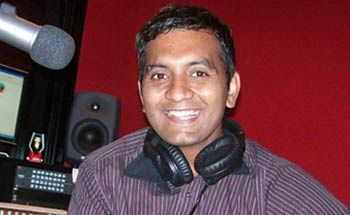
How often have you heard someone say, �radio programming is a black art'? The trial and error method of putting radio stations together seems to be the norm in the industry today. Within the span of a few months, a format station changes to a day-parted one, a contemporary station starts �block' retro programming, a high-energy young station turns laid back; everybody's busy second guessing the other.
The fact is, there is no conviction anymore. It's the same city, the same listeners, the same lifestyles, the same like and dislikes. While there may be some evolution, it is unlikely that audience tastes change so drastically and rapidly that one has to revamp the station format every few months. Almost everybody is in a hurry to get to the top and is running helter-skelter in the hope that they may hit the jackpot - the elusive �something' that will make listeners abandon the competition and stick to their station.
That's not how it works, guys. Stations and radio brands are not built overnight. Go, spend some time listening to the top stations worldwide, chances are you will find a cleaner, tighter, more focused radio station than yours, a station that has clearly identified what its purpose is and spends all its energies in delivering it. And a station that has not been making changes every few months.
I genuinely believe that radio is a simpler business than we make it out to be. And what is really required is a step-wise systematic approach to putting a station together.
Have you genuinely asked yourself - what is it that my listeners want? Or have you just presumed it is the same as what you want? The people who consume radio stations are very different from the people who run them - so, are you programming for people like them or people like you? We all have consumed research - focus groups, music tests, consumer interactions, but how many of us actually consume the data objectively?
Use research to find out what the listener wants, genuinely. Formulate your strategy and positioning accordingly. Then spend time on the product; build it up in stages. Get the music spot-on. Get your presenters to deliver content in a structured way. Get your imaging right in accordance with your positioning. Define content boundaries and areas for your presenters and time bands. Systematically add content and humour spikes. Load on promotions at regular intervals (ideally getting clients to pay for them). Then, and only then, go to town promoting your station in a big way - it's probably a waste of money unless the product is fundamentally right. And yes, keep using research to check whether you are headed in the right direction and to fine tune your product.
The biggest baggage you can have in radio is being presumptuous enough to assume that you know what the listener wants. As a radio consultant once put it, when you go fishing, the best bait is what the fish like to eat, not what you like to eat. Similarly, when you're looking to attract listeners, give them what they want, not what you or your reporting head does. It does not hurt to ask, and to listen objectively.
Top radio stations are not built overnight. They do not change every three months. Radio programming is not an art, it is a science, a science that includes elements of art and creativity. It takes time, effort, attention to detail, and a scientific, structured and strategic approach to reach the top, and then stay there. At least, that's what I think.
Pralay Bakshi has worked in top radio stations in India, Dubai and London for the last 8 years. He was the Programming Head of Fever Delhi, and till recently, the Station Head of Fever Kolkata